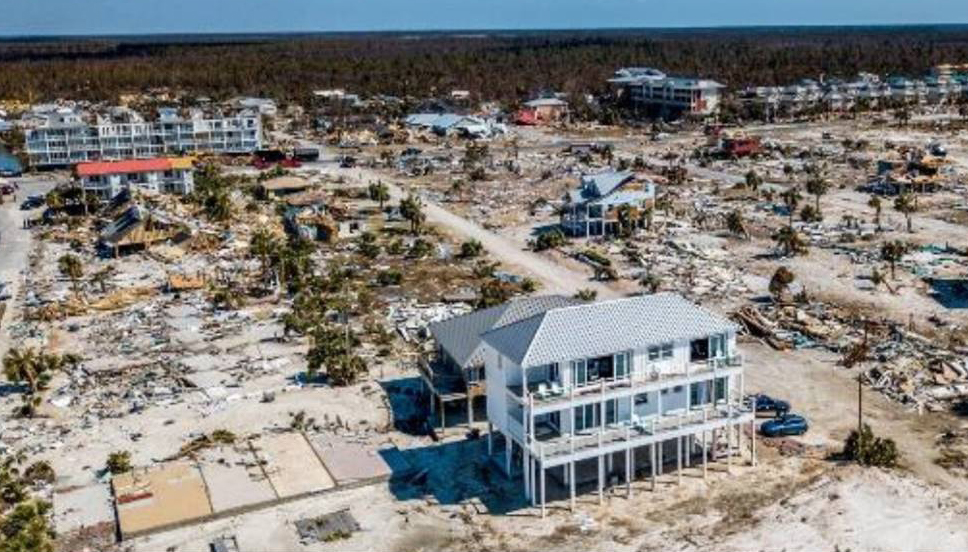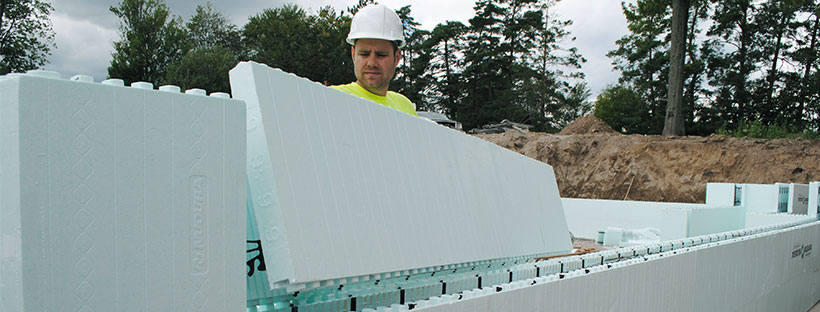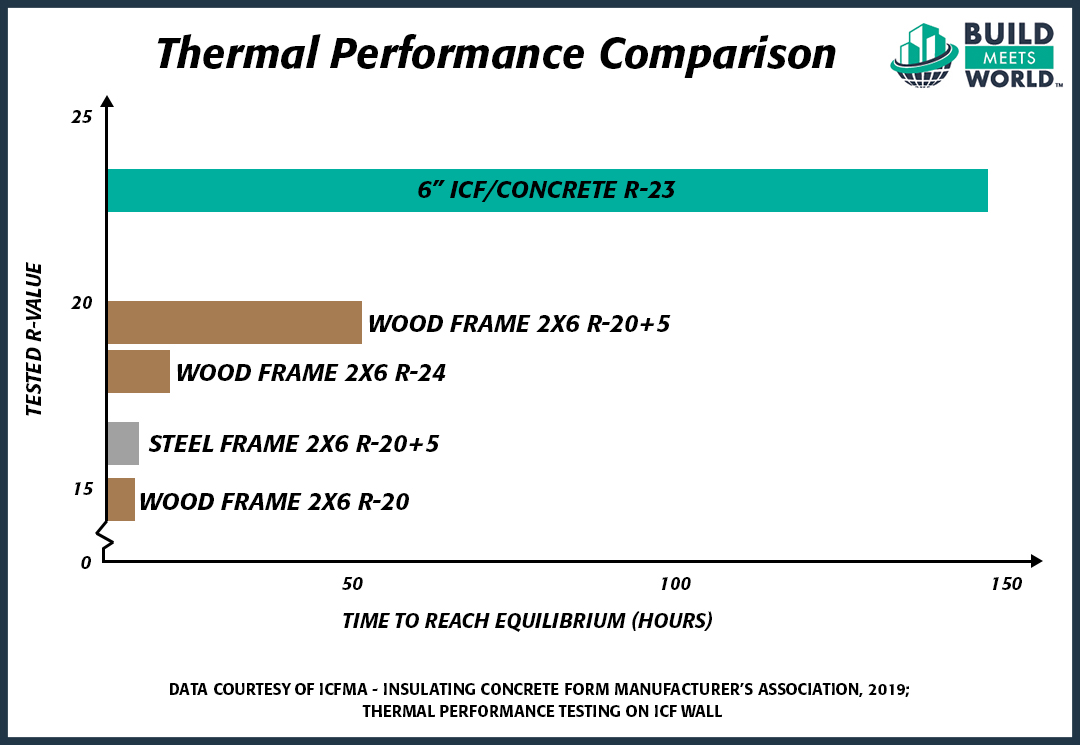
- Products
- Why Nudura
- Nudura Project Applications
- Training Academy
- Resources
- Company
A growing number of construction industry professionals recognize Insulated Concrete Forms (ICFs) as an affordable, high-performance building enclosure system. At the same time, many in the construction field have never heard of ICFs or have false perceptions about their performance and usage.  I am constantly surprised at how much myth and misconception pervades daily conversations with design professionals and other members of the construction community, as we enroll them in using these innovative stay-in-place concrete forms. ICFs deliver a “perfect wall” building envelope, and this elegantly simple and robust system may be exactly what you need to meet your project goals. However, if you are reading this and not building with ICFs, it may be because you and your team may need to separate fact from fiction. Here are the top 5 myths about ICFs and the truth behind them.
I am constantly surprised at how much myth and misconception pervades daily conversations with design professionals and other members of the construction community, as we enroll them in using these innovative stay-in-place concrete forms. ICFs deliver a “perfect wall” building envelope, and this elegantly simple and robust system may be exactly what you need to meet your project goals. However, if you are reading this and not building with ICFs, it may be because you and your team may need to separate fact from fiction. Here are the top 5 myths about ICFs and the truth behind them.
Myth #1: ICFs are too expensive.
ICFs deliver remarkable thermal protection and can be installed so quickly that many people assume ICF construction is expensive. The bottom line is, ICFs are not going to break the bank on any building project, of any size, whether used for below-grade or above-grade walls. When you add up the benefits that an ICF wall system brings to your project, the costs are comparable with other quality building enclosure assemblies. If accurately weighed and evaluated, the combined attributes of this construction method make ICFs a logical choice for almost any project.
Myth #2: I thought ICFs were for residential foundation walls only.
This is a huge misconception. Sure, it was true twenty-five years ago, especially with early versions of ICFs that did not feature monolithic concrete cores. Today, ICF construction is being widely used for K-12 schools, higher education, military projects, theaters, warehouses, and even multi-story, multi-family projects and high-rise buildings as well. Another growing trend is utilizing ICFs for houses with the walls being installed from the footings to the roof. Any wall you would build with wood, cast-in-place concrete, CMU, or tilt-up can be built with ICF. The truth is, an increasing percentage of ICF construction is above-grade, and factoring in the array of available wall core thicknesses and means of exterior finish systems that can be used with ICFs, there is typically no height limitation to an ICF building within appropriate building uses and setback constraints in the USA and Canada.

Myth #3: We tried ICFs years ago and we had blowouts and a hard time getting the walls straight.
Like any construction method, training is required to install ICFs properly. ICFs are engineered to hold liquid concrete placed at a rate of 4 feet in height per hour, and typical placement is nine to thirteen feet per day. When contractors experience blowouts, when concrete forms fail and allow concrete to spill out of the wall, it is usually because they are skipping key steps. Installers following appropriate means and methods, properly reinforcing the system at specific conditions, and placing concrete at correct rates, will find that blowouts are an extremely rare occurrence. I have coached numerous first timers installing ICFs who have had zero problems with blowouts. Getting the walls straight involves using the proper bracing and alignment system, and again, getting the proper training in using it. You can enroll in one such training course here.
Myth #4: My mechanical contractor says we can’t downsize the HVAC system.
You made the commitment to go ICF and your HVAC contractor is reluctant to downsize the heating and cooling system. This is a lost opportunity to save money on upfront as well as ongoing costs. Why does this happen? The first reason is HVAC contractors want to protect themselves from customers calling them and complaining of being too cold or too hot because the system cannot handle extreme loads in very cold or very hot times of the year. While it’s understandable and commendable to avoid call backs, this fear often leads to oversizing HVAC systems, rather than “rightsizing” them.
The second reason is energy modeling programs may not recognize the real-world performance of an ICF wall. The models rely on the input of a nominal R-Value and assume higher air leakage rates. R-Value is not the only metric that determines the in-situ performance of a wall assembly. Make sure your energy model accounts for the fact that ICF walls are going to drastically reduce your HVAC load. If you downsize your HVAC, you save money on first costs, and you take advantage of reduced operating costs for the life of the building (see Myth #1). If you don’t downsize, you are missing an opportunity to take advantage of this airtight thermal mass wall.
Myth #5: The R-20 cavity wall I’m building is almost as good as your R-24 Mass Wall with Continuous Insulation, so why would I go ICF?
A Mass Wall with continuous insulation is recognized by international building code as entirely different than a cavity wall. That’s because airtightness, continuous insulation and thermal mass greatly affect the real world performance of a building enclosure. The Insulated Concrete Form Manufacturers Association (ICFMA) has completed multiple comparative thermal performance tests of various wood and steel stud wall assemblies versus an R-23 ICF wall (see results below). These tests confirmed that an R-23 ICF wall will far outperform an R-25 cavity wall with continuous insulation (R-20+5c.i.) The test confirmed that the R-23 ICF wall performed about 60% better than a typical R-20 wood-framed wall, after the walls reached steady state. The wood wall only performed at R-14.8 to its nominal R-Value of 20, whereas, the ICF wall performed at an R-Value of 23.36, compared to its nominal R-Value of 23.
In the summary of one ICFMA study, the testing agency stated that the ICF wall took longer to equilibrate than any other wall they had ever tested, a testament to the robust performance of an ICF wall. From the moment the clock started on the thermal testing of these two wall systems, the temperature of the wood walls began to drop immediately, whereas it took over two days for the ICF wall to start dropping. That means the ICF wall needed no energy to maintain its temperature for 48 hours after a dramatic drop in temperature and the wood walls would have started calling for heat almost immediately. So, NO, your R-20 wall is not even close to this R-23 Mass Wall. At best, it’s 60% worse.
Every progressive building product has its pros and cons, but don’t let myths and misconceptions stop you from discovering the time and cost benefits of this robust thermal envelope solution. These stay-in-place insulated concrete forms are here to stay, so it might be time to re-evaluate your approach to building enclosures.
CONTACT US
We’re committed to supporting homeowners and design professionals who are interested in or use our products. We’re always happy to help and provide more information.




